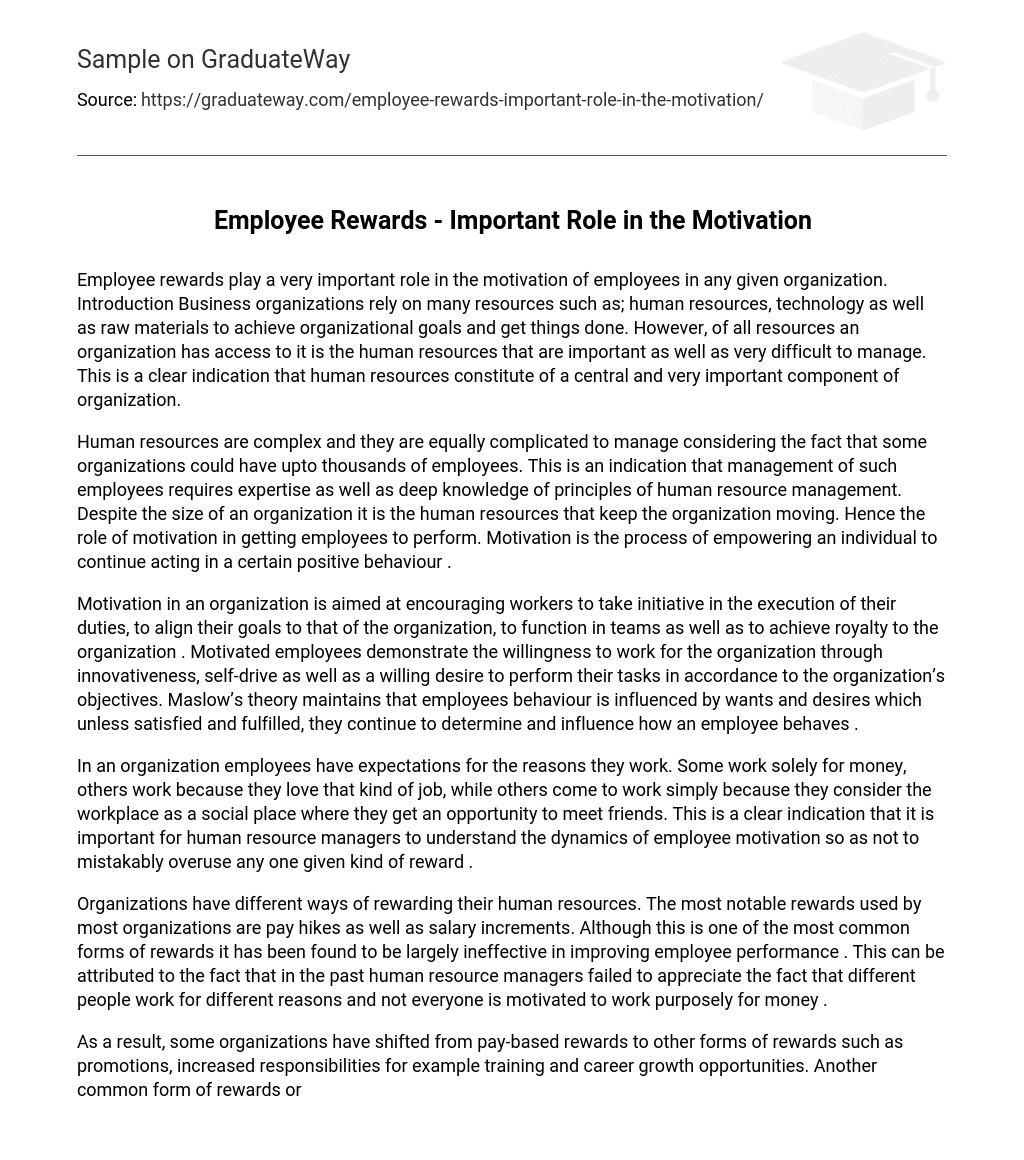Employee rewards play a very important role in the motivation of employees in any given organization. Introduction Business organizations rely on many resources such as; human resources, technology as well as raw materials to achieve organizational goals and get things done. However, of all resources an organization has access to it is the human resources that are important as well as very difficult to manage. This is a clear indication that human resources constitute of a central and very important component of organization.
Human resources are complex and they are equally complicated to manage considering the fact that some organizations could have upto thousands of employees. This is an indication that management of such employees requires expertise as well as deep knowledge of principles of human resource management. Despite the size of an organization it is the human resources that keep the organization moving. Hence the role of motivation in getting employees to perform. Motivation is the process of empowering an individual to continue acting in a certain positive behaviour .
Motivation in an organization is aimed at encouraging workers to take initiative in the execution of their duties, to align their goals to that of the organization, to function in teams as well as to achieve royalty to the organization . Motivated employees demonstrate the willingness to work for the organization through innovativeness, self-drive as well as a willing desire to perform their tasks in accordance to the organization’s objectives. Maslow’s theory maintains that employees behaviour is influenced by wants and desires which unless satisfied and fulfilled, they continue to determine and influence how an employee behaves .
In an organization employees have expectations for the reasons they work. Some work solely for money, others work because they love that kind of job, while others come to work simply because they consider the workplace as a social place where they get an opportunity to meet friends. This is a clear indication that it is important for human resource managers to understand the dynamics of employee motivation so as not to mistakably overuse any one given kind of reward .
Organizations have different ways of rewarding their human resources. The most notable rewards used by most organizations are pay hikes as well as salary increments. Although this is one of the most common forms of rewards it has been found to be largely ineffective in improving employee performance . This can be attributed to the fact that in the past human resource managers failed to appreciate the fact that different people work for different reasons and not everyone is motivated to work purposely for money .
As a result, some organizations have shifted from pay-based rewards to other forms of rewards such as promotions, increased responsibilities for example training and career growth opportunities. Another common form of rewards organizations are using is performance based pay, which links output to income . Under performance based pay employees are paid per the amount of units they produce and as a result management uses the system to encourage employees to work more since working more translates to earning more.
However, it should be noted that this kind of reward works better for wage payments under schemes such as casual labour schemes . In conclusion, employee motivation is a dynamic concept and it is simply not true that the same solution works in all situations in as far as human motivation is concerned. It is clear from the discussion above that different people have different reasons as to why they work and therefore using the same kind of reward every time such as pay increase may fail. The solution lies in the combination of more than one type of rewards to motivate staff so as to take care of the different needs amongst employees.





